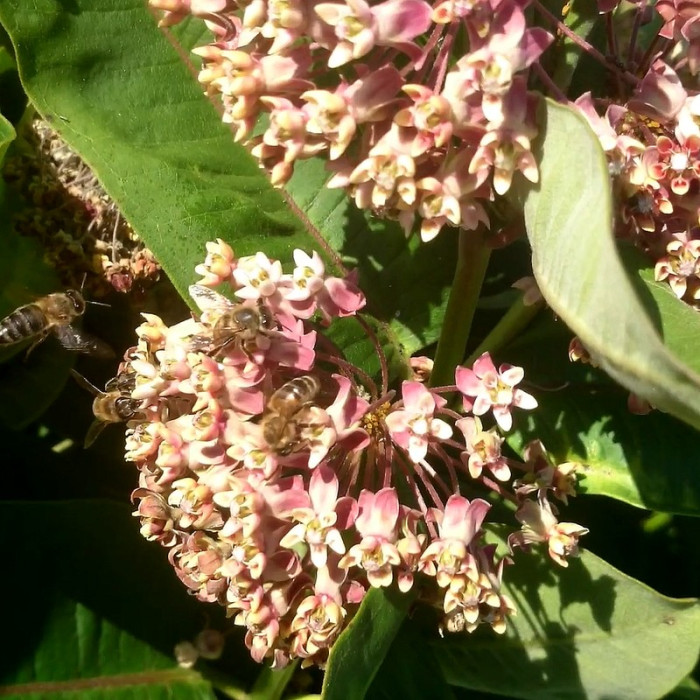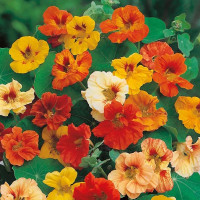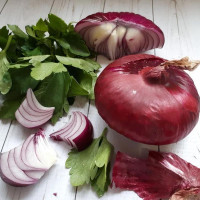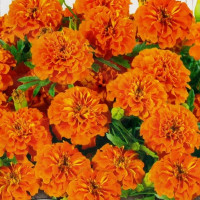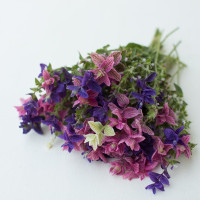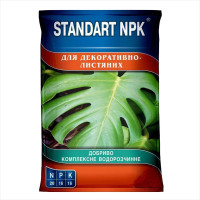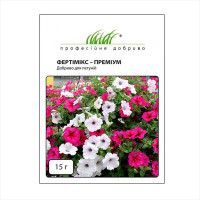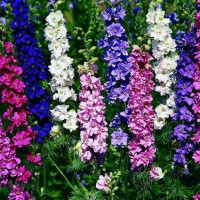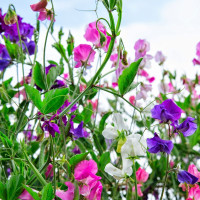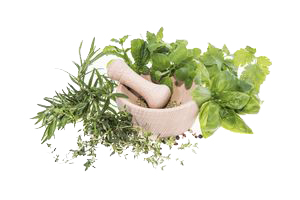Milkweed / Asclepias - perennial ornamental plant of the gossamer family, 1-2 m high. It grows in bushes, the stem is shortly pubescent, all covered with dense, oblong-elliptical leaves. The flowers are whitish-purple, bisexual, fragrant, connected by 40-80 pieces, in corymbose inflorescences. The lifespan of one flower is up to 8 days. Vatochnik (swallow) - the strongest honey plant. The bees willingly visit the crops of the milkweed, and there are no such years that the bees refuse to take nectar from it, so this plant is good to use in areas near the apiary, thereby creating a food base for bees.
The blooming of the milkweed is plentiful, so you can count on its high honey productivity. Nectar is released abundantly throughout the day at a temperature not lower than 12C. One gets the impression that the plant is constantly sprayed with honey, which attracts a large number of bees and other insects. and the secretion of nectar during the day is so fast that a strong bee family can collect 5-7 kilograms of it in one day.
Milkwort honey has its own characteristics, and it is easy to distinguish it from honey taken from other honey plants - it is fragrant and has its own, very delicate taste. In color, it is unusually light, or with a slightly yellowish tint, and the lids on the honeycombs are pearly white. To pump out in dry, hot weather, honey has to be preheated beforehand, it is so thick and heavy. High-quality and fragrant, honey from the milkweed is always in demand.
Flowering of the sunflower begins in mid-June, and continues in July, until the sunflower begins to bloom. The duration of flowering is 40-45 days. During this period of time, there is almost no bribe from other plants, so it is advisable to breed this culture in all free areas near the apiary. The swallowtail (swallow) propagates both by seeds and roots. Root germination is achieved almost 98%.
It grows well not only on black soil, but also on loamy soils and even on sand. The rhizome penetrates the soil so deeply that plowing, digging, or simply pulling out is not capable of destroying the culture. The remains of rhizomes from the depths give vigorous shoots. Such a rhizome determines not only drought resistance, but also the annual release of nectar.
In addition, this plant is very valuable for strengthening slopes, sands. In addition, the vatochnik is also a technical culture. The plant contains up to 4-5.5% rubber. The seeds contain up to 20% semi-drying technical oil. Seed flyers can be used to make insulating pillows.
It is used mainly for decorating household and garden plots.
Sowing seeds in open ground - in early spring, immediately after the snow melts, sowing seeds for seedlings - in late March or early April, planting seedlings in the garden - in early June. Flowering in summer or autumn. Prefers a sunny location.
The sowing rate with seeds is 1 gram per 2.5 m2.
The more bees there are on your site, the more fruitful your vegetables will be!

No questions about this product, be the first and ask your question.




